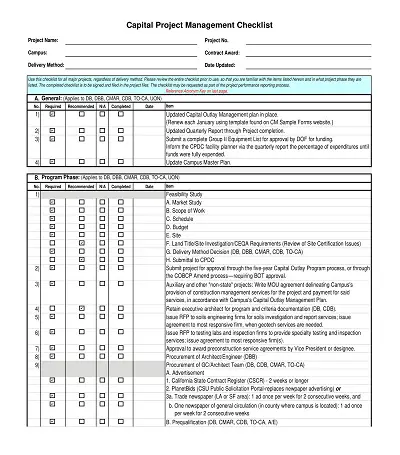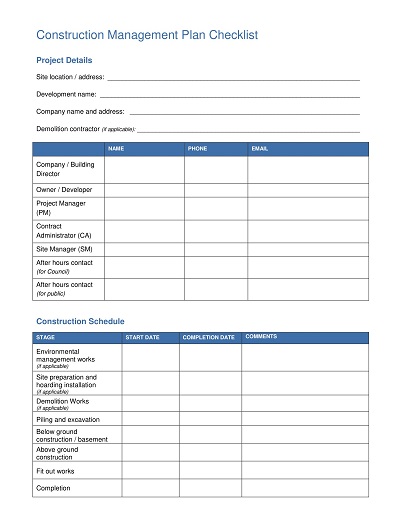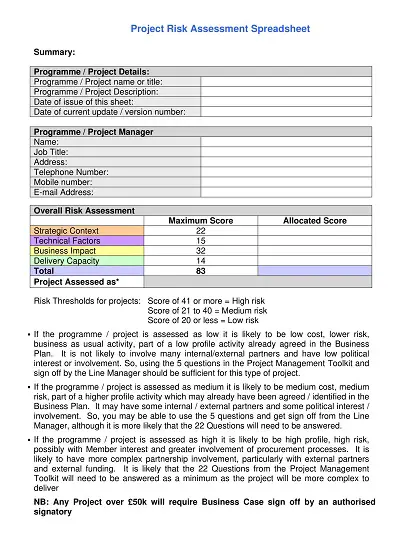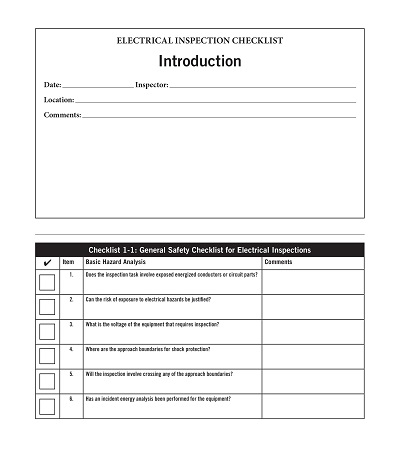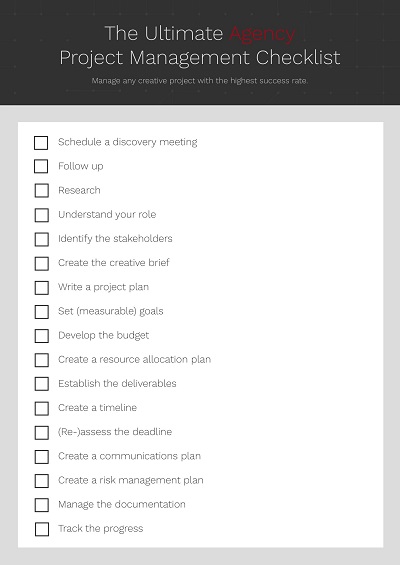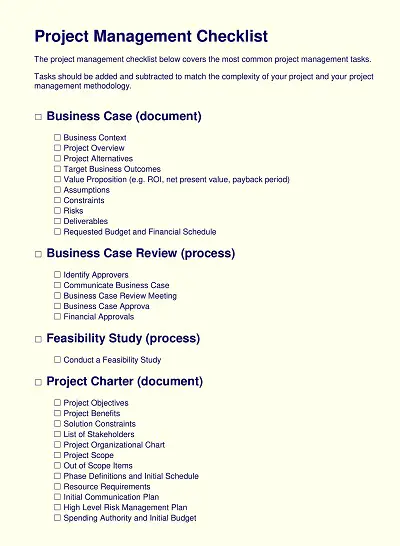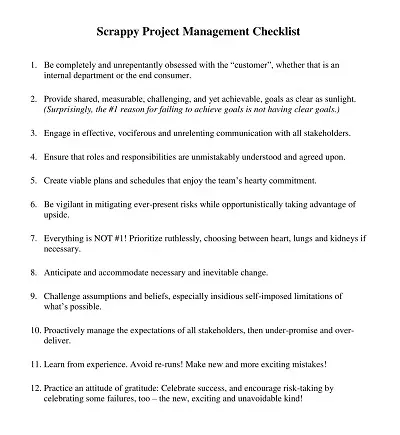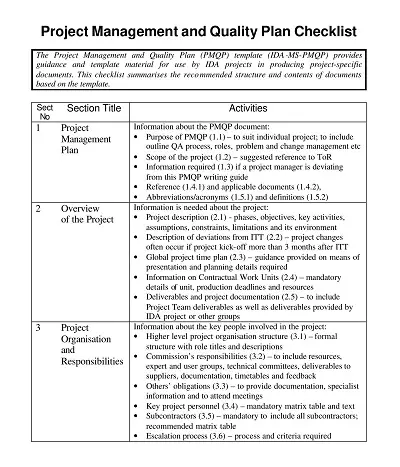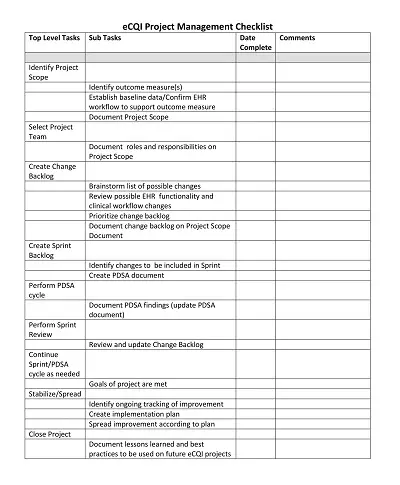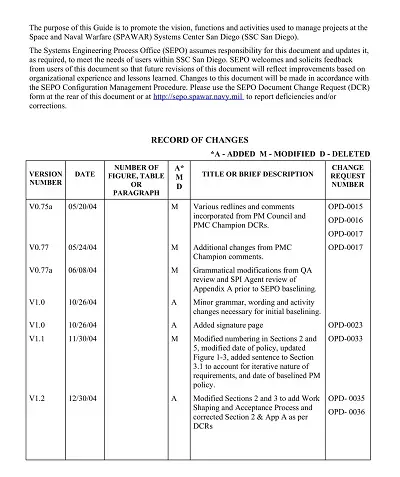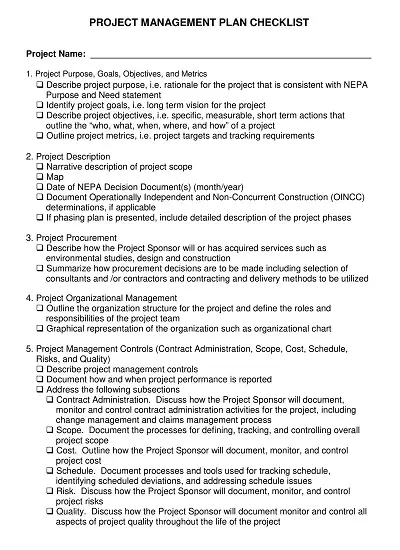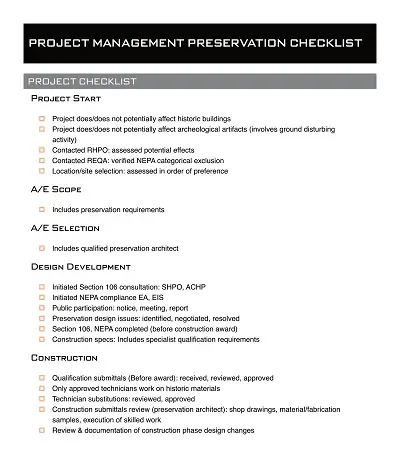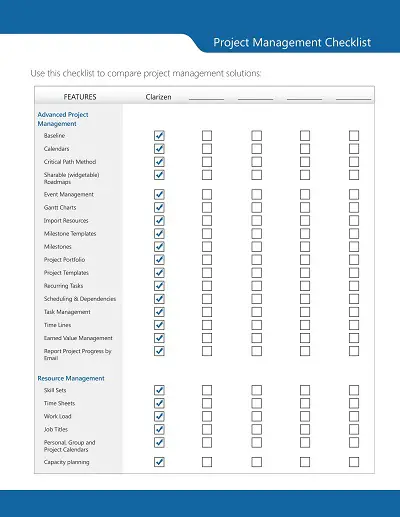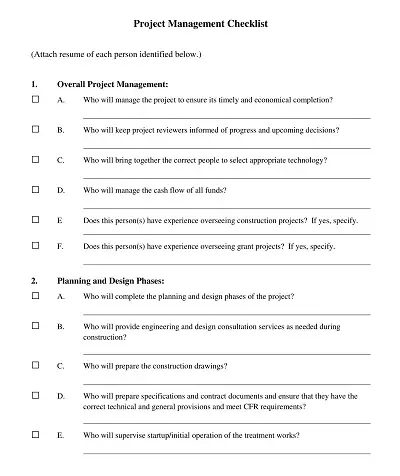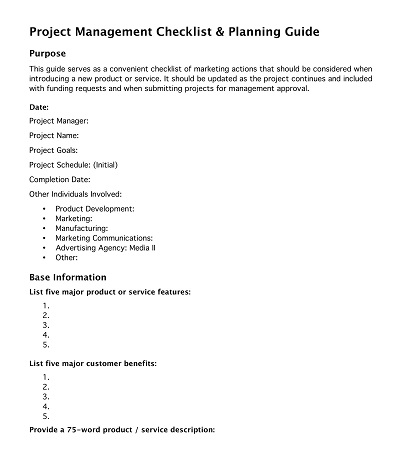25+ Free Project Management Checklist Samples & Templates
Project management is a dynamic and complex process that requires careful planning, execution, and monitoring to achieve successful outcomes. A Project Management Checklist template ensures that key tasks are systematically addressed throughout the project lifecycle. It guides project managers, providing a structured framework to organize activities, track progress, and manage resources effectively.
Table of Contents
The Project Management Checklist aims to enhance project transparency, mitigate risks, and facilitate communication among team members and stakeholders. By breaking the project into manageable components, the checklist helps project managers control various aspects, preventing oversights and ensuring that the project aligns with its objectives. Project checklists are essential for keeping your team on track and delivering projects on time and within budget.
Download Free Project Management Checklist
Benefits of Project Management Checklist
A project management checklist is a valuable tool that helps project managers, and team members ensure that all necessary tasks and activities are completed systematically and organized. Here are some benefits of using a project management checklist:
- Organization: Organizing tasks into manageable and achievable steps is fundamental to effective project management. Breaking down complex tasks into smaller components makes it easier for individuals or teams to understand, plan, and execute work.
- Time Management: Facilitates better time management by prioritizing tasks and setting deadlines. Helps in identifying critical path activities and potential bottlenecks.
- Project Closer: They assisted in the closure phase by ensuring that all necessary project completion, documentation, and handover tasks were completed. Supports the evaluation of the project’s success and areas for improvement.
- Structured Planning: Provides a structured framework for planning and organizing project tasks. It helps break down the project into manageable steps, making it easier to create a comprehensive plan.
How to Use a Project Checklist Template
Using a project checklist template can help you stay organized and pay attention to important tasks or details throughout the project lifecycle. Here’s a step-by-step guide on how to use a project checklist template:
Select or Create a Checklist Template
You can find project management checklist templates online or create your own using spreadsheet software like Microsoft Excel or Google Sheets. Templates often include common project tasks and milestones, but you can customize them to suit your specific project needs.
Identify Project Phases
Divide your project into phases or stages (e.g., planning, execution, monitoring, closure). Each phase may have specific tasks that need to be completed.
Use Project Management Software
Consider using project management tools or software that integrates with checklist templates. Tools like Trello, Asana, or Microsoft Project can enhance collaboration and provide additional features for project tracking.
Closure and Evaluation
When the project is complete, use the checklist to ensure that all closure tasks are completed, such as documentation, handovers, and post-project evaluations.
Brainstorm project task
Start by writing down all the tasks that must be completed to complete the project. Ensure to include all the small details, such as ordering supplies, sending emails, and setting deadlines.
How to Create a Project Management Checklist Template
Creating a project checklist is crucial to ensure that all necessary tasks are identified and completed in an organized manner. Here’s a step-by-step guide on how to make a project checklist:
- Define the Project Scope: Clearly state the name of the project. Clearly outline the goals and objectives of the project. Identify key deliverables and milestones. The project scope is a clear and concise description of all the work that needs to be accomplished within a project, including all the deliverables, features, functionalities, tasks, deadlines, and constraints.
- List Tasks: Break down the project into smaller, manageable tasks. Ensure each task is specific, measurable, achievable, relevant, and time-bound. Remember, the tasks you include will greatly depend on the nature of your project.
- Include Milestones: Identify significant milestones or checkpoints in the project. Milestones help track progress and celebrate achievements.
- Risk Management: Identify potential risks and develop mitigation strategies. Include contingency plans for unforeseen issues. Inventing and identifying potential risks could help prevent the most frequent project pitfalls, such as unrealizing deadlines, poor communication, lack of money, and career scope.
- Document Changes: If changes occur during the project, update the checklist accordingly. Document the reasons for changes and the impact on the overall project.
- Closure and Evaluation: Close out the project by confirming all tasks are complete. Conduct a project evaluation to identify lessons learned and areas for improvement.
- Communication Plan: Develop a communication plan outlining how, when, and what information will be communicated to stakeholders. Communication management plans and establishes rules for communication during the project.
Why Do You Need a Project Checklist?
The first step in creating a project checklist is to understand the project. Identify its goals and the problems it will solve. Use or adapt old project checklists for future projects. A project checklist serves as a valuable tool in project management for several reasons:
- Organization and Planning: A checklist helps organize project tasks and ensures everything is noticed. It serves as a roadmap for the project, outlining the steps from initiation to completion.
- Task Prioritization: By breaking down the project into specific tasks and milestones, a checklist allows for prioritization. They ensure that critical tasks are identified and addressed first, contributing to efficient project execution.
- Issue Resolution: A checklist helps identify and address project issues promptly. It prompts the development of solutions and the implementation of corrective actions, preventing problems from escalating.
- Client Satisfaction: A well-managed project, guided by a checklist, is more likely to meet or exceed client expectations; this can increase client satisfaction and positive feedback, enhancing the reputation of the project team and the organization.
Conclusion
In conclusion, project management checklist templates are indispensable for successful project outcomes. These templates offer a systematic and organized approach to project planning, execution, and monitoring. Through predefined communication plans, the checklist templates promote effective collaboration among team members and stakeholders.
In essence, project management checklist templates are indispensable tools for project managers, providing a structured and systematic approach to project execution. The benefits extend beyond simple task management, encompassing effective communication, risk management, and quality control.

